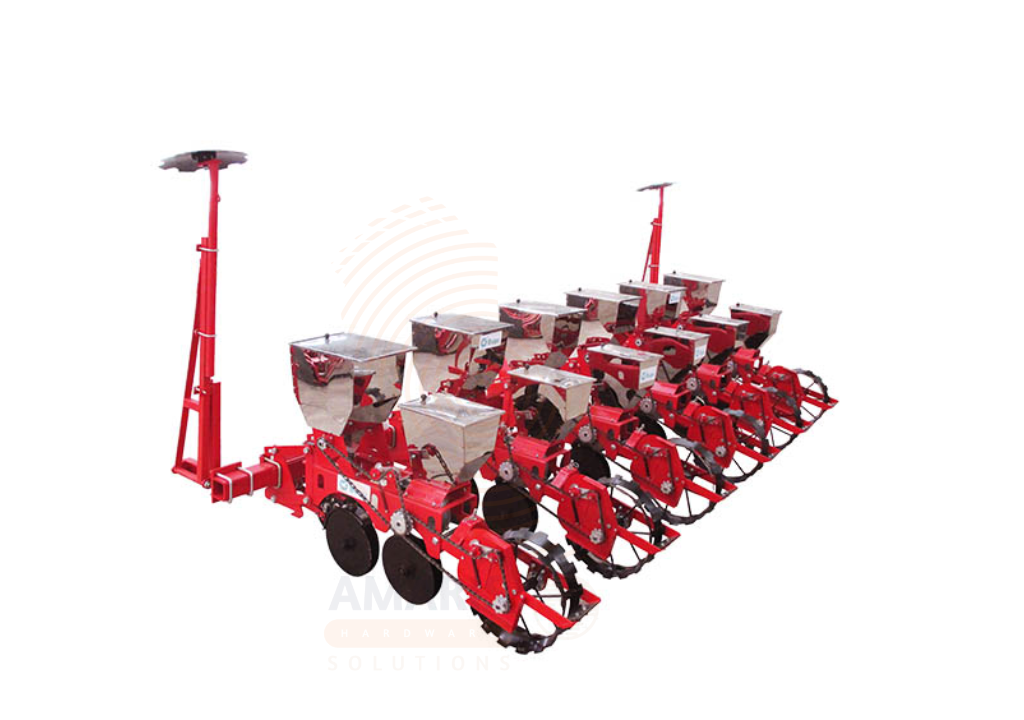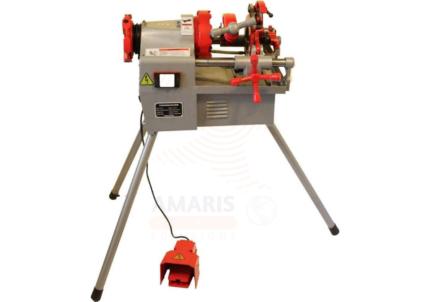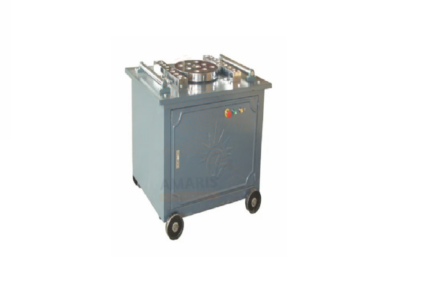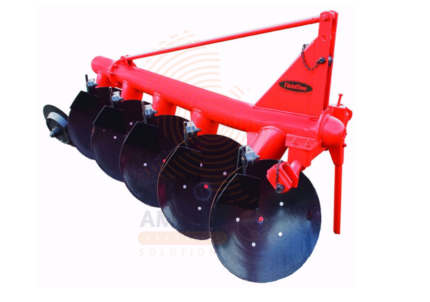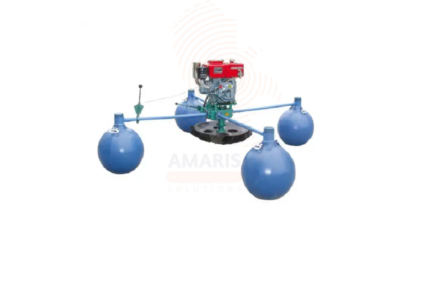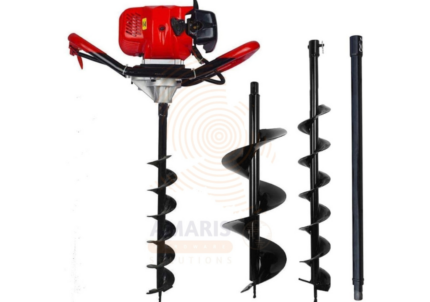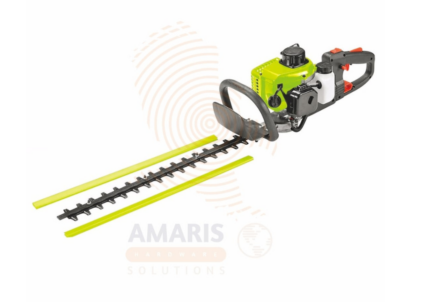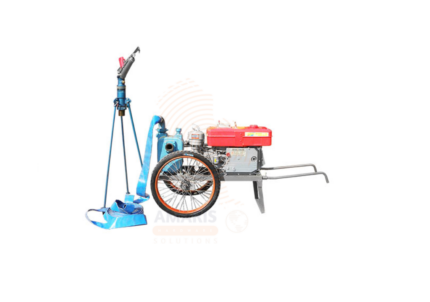Planter
WhatsApp Order
A Planter is a container or device used to hold soil and plants for gardening, landscaping, or indoor decoration. Planters come in various sizes, shapes, and materials, such as plastic, ceramic, metal, or wood, designed to provide an ideal growing environment for flowers, herbs, vegetables, or ornamental plants. They are essential for organizing plants in limited spaces, improving aesthetics, and facilitating plant care by providing drainage and soil containment.
Category: GARDEN & OUTDOOR TOOLS
Tags: flower pot, garden container, gardening, herb growing, indoor plants, landscaping, outdoor planter, plant pot, planter
Description
Table of Contents
TogglePlanter
Uses
-
Gardening and Landscaping
o Used to grow flowers, shrubs, and small trees in gardens and outdoor spaces.
o Helps organize plants in patios, balconies, and terraces for decorative purposes. -
Indoor Plant Cultivation
o Suitable for growing indoor plants, improving air quality and home ambiance.
o Enables easy movement and placement of plants inside homes or offices. -
Herb and Vegetable Growing
o Provides controlled environments for growing kitchen herbs and vegetables.
o Useful for urban gardening and small-space agriculture. -
Soil and Water Management
o Planters often include drainage holes to prevent waterlogging and root rot.
o Allows for better soil management and fertilization control. -
Landscape Design
o Used to create visual boundaries, pathways, and focal points in landscaping.
o Enhances outdoor aesthetics in public parks and private gardens. -
Educational and Recreational Gardening
o Used in schools and community centers for teaching gardening and plant care.
o Suitable for hobbyists and professional growers alike.
SAFETY HANDLING PRECAUTIONS
Safety Precautions
-
Material Safety
o Ensure planters are made of non-toxic materials safe for plants and pets.
o Avoid using damaged or cracked planters that can break and cause injury. -
Proper Handling
o Use gloves when handling soil or fertilizers to prevent skin irritation.
o Lift heavy planters with proper technique or assistance to avoid injury. -
Drainage Management
o Ensure drainage holes are clear to prevent water accumulation that can cause plant diseases. -
Placement Safety
o Place planters on stable surfaces to avoid tipping and falling hazards.
o Avoid placing planters in high-traffic areas where they may cause tripping. -
Chemical Use
o Use fertilizers and pesticides according to manufacturer guidelines to prevent harm to humans and the environment. -
Weather Considerations
o Protect planters from extreme weather conditions that may damage them or plants inside.
Related products
Disc Plough
A disc plough is a rugged agricultural tool featuring a series of concave steel discs mounted on a sturdy frame, used to break and turn heavy, compacted soils. Designed to operate in rocky, root-filled, or uneven terrain, it slices through debris and flips over the topsoil, burying crop residue and preparing the land for planting. Available in multiple configurations—including offset and tandem types—disc ploughs are essential for primary tillage, providing soil aeration, weed control, and residue mixing while enhancing water infiltration and reducing compaction.
Fish Aerator
A fish aerator is a device designed to increase oxygen levels in water, essential for maintaining the health and survival of fish in aquaculture systems, ponds, tanks, and live fish transport. It works by agitating water or releasing air bubbles to promote gas exchange between air and water. Fish aerators are commonly used in fish farming, aquariums, and bait tanks to prevent oxygen depletion, especially in densely stocked or warm water conditions. They improve water quality, reduce fish stress, and promote better growth and survival rates.
Gasoline Auger Machine
A gasoline auger machine is a power tool designed for drilling holes in the ground using a rotating helical screw blade, commonly known as an auger. Unlike electric or manual augers, a gasoline auger machine is powered by a gasoline engine, providing greater mobility and independence from electrical power sources. This type of machine is commonly used in construction, landscaping, and agriculture for tasks such as digging holes for fence posts, planting trees, or installing various types of foundations. The gasoline engine provides the necessary power to turn the auger bit efficiently, making it suitable for heavy-duty and remote applications where access to electricity may be limited.
Gasoline Hedge Trimmer
A gasoline hedge trimmer is a handheld gardening tool powered by a gasoline engine, designed for trimming and shaping hedges, bushes, and shrubs. It consists of a cutting blade or blades, typically reciprocating, attached to a long shaft with a handle or grip for ease of use. The gasoline engine provides the necessary power to drive the blades, offering mobility and independence from electrical outlets, making it suitable for use in outdoor settings where access to electricity may be limited. Gasoline hedge trimmers are valued for their versatility, allowing users to manicure and maintain landscaping with efficiency and precision.
Heavy Duty Pruner
PRODUCT DESCRIPTION
A heavy-duty pruner is a robust and durable cutting tool designed for the substantial and demanding tasks of pruning thick branches, stems, or other tough vegetation in gardening, horticulture, or arboriculture. Typically featuring reinforced blades and sturdy construction, a heavy-duty pruner is engineered to withstand the rigors of intensive use, providing increased cutting power and longevity compared to standard pruners. These tools are essential for tackling larger and more challenging pruning jobs with efficiency and precision.
Irrigation Pump Set
An Irrigation Pump Set is a complete system designed to move water efficiently from a source—such as a river, well, pond, or tank—to agricultural fields for crop irrigation. It typically consists of a water pump (centrifugal or submersible), an engine or motor (electric or fuel-powered), piping connections, filters, and sometimes a control panel or automation features. These pump sets are vital in agricultural operations, ensuring consistent and controlled water distribution to crops. They are used across small-scale farms to large commercial operations and are compatible with various irrigation methods like drip, sprinkler, or flood systems. Irrigation pump sets are built for durability, high flow rates, and long operational hours in tough outdoor conditions.
Lawn Saw Blade – Alloy
A lawn saw blade alloy refers to the material composition of the blade used in a lawn saw. The term "alloy" indicates that the blade is made from a mixture of different metals, combining their properties to enhance the overall performance and durability of the saw blade. The specific alloy composition can vary, but commonly used materials include steel alloys that provide strength, sharpness, and resistance to wear and corrosion. The choice of alloy in a lawn saw blade is crucial for ensuring efficient cutting, longevity, and resistance to the environmental conditions encountered during lawn and garden use.
Tree Saw
A tree saw is a specialized cutting tool designed for the purpose of trimming, pruning, or felling trees. It typically consists of a serrated blade with sharp teeth affixed to a handle, allowing users to efficiently and precisely cut through branches, limbs, or entire trees. Tree saws come in various designs, including hand-held saws, pole saws with extendable handles, and chainsaws powered by electricity or fuel. These tools are commonly used in forestry, arboriculture, landscaping, and other outdoor activities that involve tree maintenance and removal.


 Acrylic Sealants
Acrylic Sealants Construction Adhesives
Construction Adhesives Double-Sided Tape
Double-Sided Tape Duct Tape
Duct Tape Electrical Tape
Electrical Tape Epoxy & Resins
Epoxy & Resins Masking Tape
Masking Tape
 Automotive Wrenches & Socket Sets
Automotive Wrenches & Socket Sets Battery Chargers & Jump Starters
Battery Chargers & Jump Starters Car Jacks & Stands
Car Jacks & Stands Car Wash & Detailing Products
Car Wash & Detailing Products Diagnostic Tools
Diagnostic Tools Tire Inflators
Tire Inflators Vehicle Lighting
Vehicle Lighting Oil & Lubricants
Oil & Lubricants
 Adhesives & Sealants
Adhesives & Sealants Bricks & Blocks
Bricks & Blocks Cement & Concrete
Cement & Concrete Drywall & Plaster
Drywall & Plaster Flooring (Tiles, Wood, Laminate)
Flooring (Tiles, Wood, Laminate) Lumber & Plywood
Lumber & Plywood Paints, Primers & Coatings
Paints, Primers & Coatings Insulation Materials
Insulation Materials Roofing Materials
Roofing Materials
 Circuit Breakers
Circuit Breakers Electrical Cables & Wires
Electrical Cables & Wires Switches & Sockets
Switches & Sockets Fuses & Relays
Fuses & Relays Connectors & Terminals
Connectors & Terminals Electrical Boxes & Panels
Electrical Boxes & Panels Conduit & Fittings
Conduit & Fittings Lighting Fixtures & Bulbs
Lighting Fixtures & Bulbs Extension Cords & Power Strips
Extension Cords & Power Strips
 Anchors
Anchors Bolts
Bolts Clips & Clamps
Clips & Clamps Screws
Screws Nuts
Nuts Washers
Washers Rivets
Rivets Nails
Nails Threaded Rods
Threaded Rods
 Hammers
Hammers Measuring Tools (Tapes, Levels, Calipers)
Measuring Tools (Tapes, Levels, Calipers) Screwdrivers
Screwdrivers Pliers & Cutters
Pliers & Cutters Saws & Blades
Saws & Blades Chisels & Punches
Chisels & Punches Allen Keys & Hex Keys
Allen Keys & Hex Keys Ratchets & Socket Sets
Ratchets & Socket Sets Wrenches & Spanners
Wrenches & Spanners
 Power Tool Accessories (Blades, Bits, Discs)
Power Tool Accessories (Blades, Bits, Discs) Rotary Tools
Rotary Tools Saws (Circular, Jigsaw, Reciprocating)
Saws (Circular, Jigsaw, Reciprocating) Drills & Drivers
Drills & Drivers Grinders & Sanders
Grinders & Sanders Heat Guns
Heat Guns Nail Guns
Nail Guns Impact Wrenches
Impact Wrenches Batteries & Chargers
Batteries & Chargers
 Pipes & Fittings (PVC, Copper, PEX)
Pipes & Fittings (PVC, Copper, PEX) Plumbing Tools
Plumbing Tools Pumps & Motors
Pumps & Motors Sealants & Adhesives for Plumbing
Sealants & Adhesives for Plumbing Valves & Taps
Valves & Taps Water Heaters
Water Heaters Drainage Systems
Drainage Systems Faucets & Fixtures
Faucets & Fixtures Hoses & Tubing
Hoses & Tubing
 Hinges & Latches
Hinges & Latches Hooks & Brackets
Hooks & Brackets Window Hardware
Window Hardware Chains & Cables
Chains & Cables Casters & Wheels
Casters & Wheels Shelving & Storage Systems
Shelving & Storage Systems Door Handles & Locks
Door Handles & Locks Drawer Slides & Cabinet Hardware
Drawer Slides & Cabinet Hardware
 Personal Protective Equipment (PPE)
Personal Protective Equipment (PPE) Respirators & Masks
Respirators & Masks Safety Glasses
Safety Glasses Safes
Safes Security Cameras
Security Cameras Gloves
Gloves Helmets
Helmets Ear Protection
Ear Protection Fire Safety Equipment
Fire Safety Equipment Locks & Padlocks
Locks & Padlocks Motion Sensors & Alarms
Motion Sensors & Alarms
 Garden Fencing
Garden Fencing Garden Furniture Hardware
Garden Furniture Hardware Lawn Mowers
Lawn Mowers Trimmers & Edgers
Trimmers & Edgers Shovels & Spades
Shovels & Spades Rakes & Hoes
Rakes & Hoes Pruning Shears & Loppers
Pruning Shears & Loppers Watering Systems (Hoses, Sprinklers, Nozzles)
Watering Systems (Hoses, Sprinklers, Nozzles)
 Interior Paints
Interior Paints Paint Brushes & Rollers
Paint Brushes & Rollers Paint Strippers & Thinners
Paint Strippers & Thinners Paint Trays & Accessories
Paint Trays & Accessories Exterior Paints
Exterior Paints Spray Paints
Spray Paints Primers & Undercoats
Primers & Undercoats Varnishes & Stains
Varnishes & Stains
 Gaskets & Seals
Gaskets & Seals Hydraulic Fittings
Hydraulic Fittings Industrial Fasteners
Industrial Fasteners Industrial Hoses
Industrial Hoses Lubricants & Greases
Lubricants & Greases Metal Sheets & Bars
Metal Sheets & Bars Bearings & Bushings
Bearings & Bushings Belts & Pulleys
Belts & Pulleys
 HVAC Filters
HVAC Filters Insulation for HVAC
Insulation for HVAC Air Conditioners
Air Conditioners Refrigerants
Refrigerants Ventilation Ducts & Fittings
Ventilation Ducts & Fittings Thermostats & Controllers
Thermostats & Controllers Fans & Blowers
Fans & Blowers
 Pegboards & Hooks
Pegboards & Hooks Shelving Units
Shelving Units Storage Bins & Containers
Storage Bins & Containers Toolboxes & Tool Chests
Toolboxes & Tool Chests Workbenches
Workbenches Drawer Organizers
Drawer Organizers Labeling Supplies
Labeling Supplies
 Welding Accessories (Clamps, Brushes)
Welding Accessories (Clamps, Brushes) Welding Electrodes & Rods
Welding Electrodes & Rods Welding Helmets & Gloves
Welding Helmets & Gloves Welding Machines
Welding Machines Soldering Irons & Stations
Soldering Irons & Stations Flux & Solder Wire
Flux & Solder Wire
 Generator Accessories
Generator Accessories Inverters
Inverters Portable Generators
Portable Generators Power Inverters
Power Inverters Transfer Switches
Transfer Switches Diesel & Gasoline Generators
Diesel & Gasoline Generators
 Transport Equipment: Carts, Dollies, and Hand Trucks
Transport Equipment: Carts, Dollies, and Hand Trucks Storage Solutions: Pallets, Racks, and Containers
Storage Solutions: Pallets, Racks, and Containers Lifting Equipment: Hoists, Cranes, and Jacks
Lifting Equipment: Hoists, Cranes, and Jacks Conveyors and Accessories: Belts and Rollers
Conveyors and Accessories: Belts and Rollers